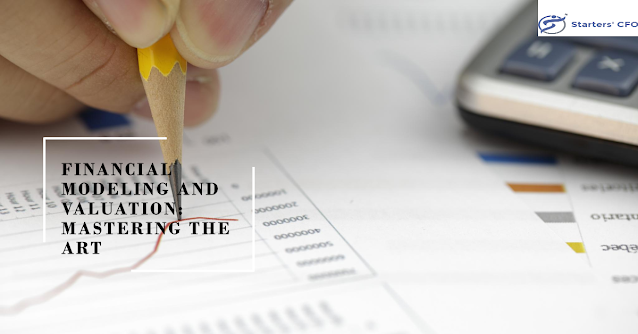Financial Modeling and Valuation: Mastering the Art
In the dynamic landscape of finance, financial modeling and valuation stand as essential pillars that guide decision-making processes, shape investment strategies, and drive business growth. At the heart of every successful financial endeavor lies a robust understanding of these concepts. Join us as we delve deep into the intricacies of financial modeling and valuation to empower your financial acumen.
Understanding Financial Modeling
Financial modeling serves as a blueprint for analyzing the performance and prospects of businesses, projects, or investments. It involves creating mathematical representations of financial situations using various tools and methodologies. Through financial modeling, stakeholders gain insights into potential risks, returns, and strategic directions.
Key Components of Financial Modeling
1. Historical Analysis: Examining past financial data to identify trends and patterns that can inform future projections.
2. Forecasting: Utilizing assumptions and data to predict future financial performance.
3. Scenario Analysis: Evaluating outcomes under different scenarios to assess risk and opportunity.
4. Sensitivity Analysis: Testing the impact of changing variables on financial outcomes.
5. Valuation Techniques: Applying different valuation methods to determine the worth of assets, businesses, or securities.
Importance of Valuation in Finance
Valuation forms the cornerstone of investment decisions, mergers and acquisitions, and financial reporting. It entails determining the fair value of assets and liabilities, often in the context of market conditions and industry trends.
Common Valuation Methods
1. Comparable Company Analysis: Assessing the value of a target company based on similar publicly traded firms.
2. Discounted Cash Flow (DCF): Estimating the present value of future cash flows to derive intrinsic value.
3. Asset-Based Valuation: Evaluating a company's worth based on its tangible and intangible assets.
4. Earnings Multiples: Using metrics like Price-to-Earnings (P/E) ratio to gauge valuation relative to earnings.
Mastering Financial Modeling and Valuation Techniques
Achieving mastery in financial modeling and valuation requires a blend of technical skills, industry knowledge, and analytical prowess.
Steps to Enhance Financial Modeling Skills
1. Advanced Excel Proficiency: Mastering Excel functions and shortcuts for efficient modeling.
2. Programming Languages: Learning languages like Python or R for automation and complex modeling.
3. Continuous Learning: Staying updated with industry trends and evolving best practices.
4. Case Studies and Practical Applications: Applying theoretical knowledge to real-world scenarios for deeper understanding.
Developing Effective Valuation Strategies
1. Interpreting Data: Honing the ability to derive meaningful insights from financial information.
2. Risk Assessment: Integrating risk factors into valuation models for comprehensive analysis.
3. Communication Skills: Articulating valuation findings clearly to stakeholders and decision-makers.
4. Ethical Considerations: Upholding integrity and transparency in valuation processes.
The Future of Financial Modeling and Valuation
As technology advances and markets evolve, the landscape of financial modeling and valuation continues to transform. Automation, artificial intelligence, and big data are revolutionizing traditional practices, enabling more sophisticated analyses and predictions.
In conclusion, financial modeling and valuation are indispensable tools for navigating the complexities of modern finance. By honing these skills, professionals can make informed decisions, mitigate risks, and unlock opportunities in an ever-changing economic environment.



Comments
Post a Comment